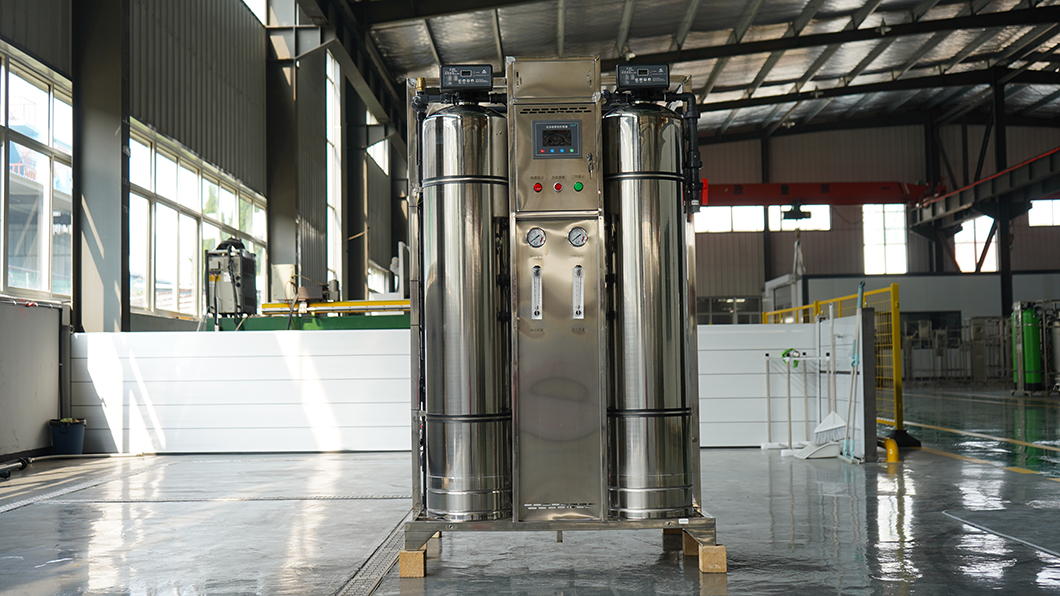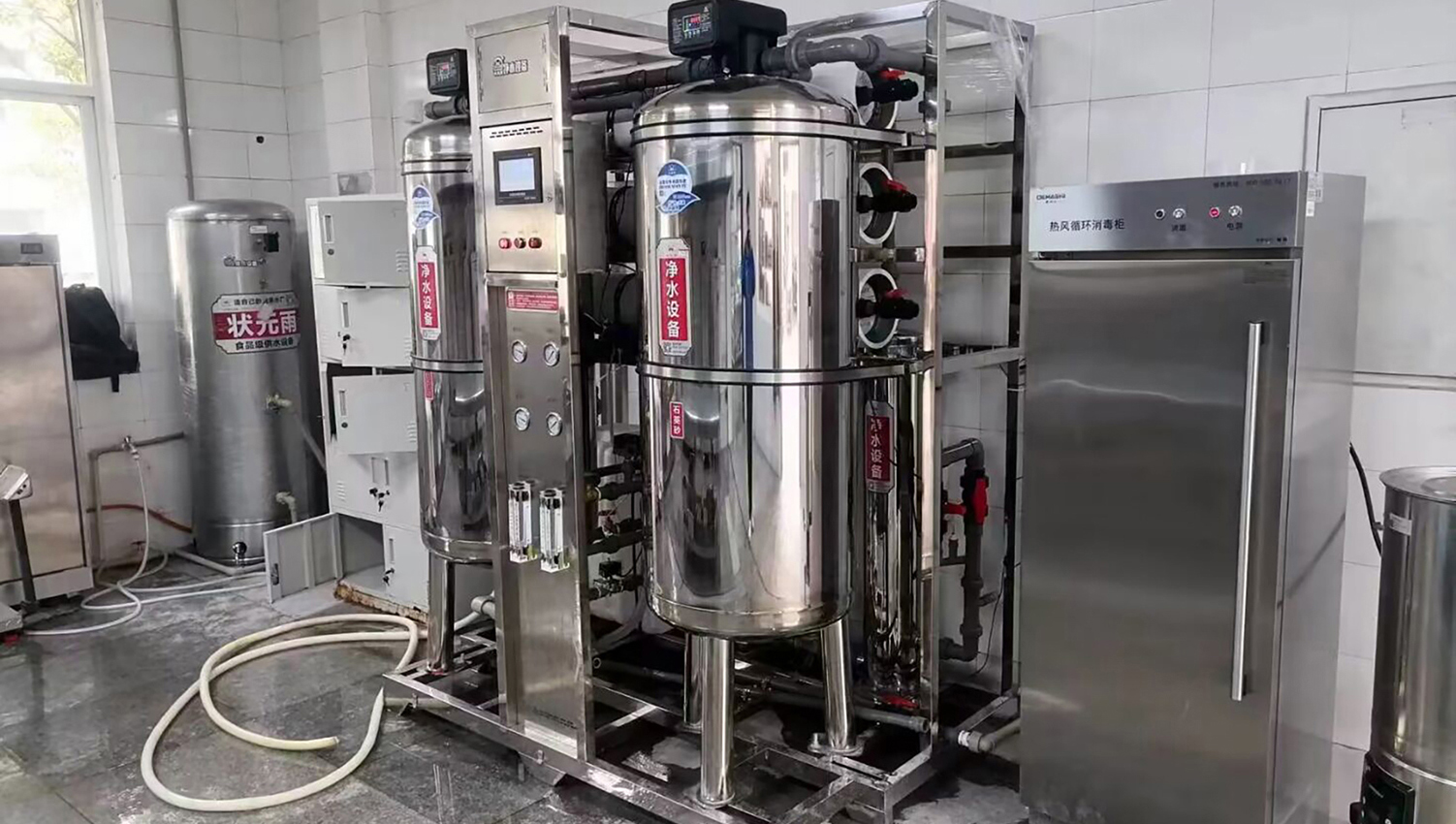Water is one of the most important elements Mother Nature has provided, and clean water is a basic human need. Amongst the numerous ways to clean and purify water for human consumption, Reverse Osmosis RO stands out as one of the most efficient, widely used technologies that leave minimal carbon footprint. But what exactly is reverse osmosis and how does it work? Let's find out in the blog below.
Although reverse osmosis is a revolutionary water purification process that removes contaminants, impurities, and unwanted substances, it accomplishes that through a simple function of forcing water through a semipermeable membrane. Osmosis occurs naturally as the movement of water molecules from a region of low solute concentration to one of higher concentration. RO takes this process and flips it through the application of external pressure, water is forced to move from a region of high solute concentration to one of low solute concentration, leaving behind impurities and providing ultra-clean water and pure water.
 What does it do?
What does it do?
This process is outstandingly effective at removing a broad range of contaminants, including:
· Dissolved salts and minerals (like sodium, calcium, and magnesium)
· Organic compounds
· Heavy metals (such as lead and arsenic)
· Microorganisms (like bacteria and viruses)
· Chemicals (like chlorine and pesticides)
The core element of reverse osmosis is a semipermeable membrane- think of it as a highly selective barrier that only allows water molecules to go through while holding back everything else. Let us take a step-by-step look at how the process goes:
Usually, before the water reaches the reverse osmosis membrane, it is forced through a pre-filter like a sediment filter to ensure the removal of larger particles, sediment, and chlorine. This added step elongates the life and optimal performance of the RO membrane by protecting it from the aforementioned debris and heavy suspended particles.
After the pre-filtration process, the water is subjected to high pressure which is the driving force behind water molecules. Pushing them through the semipermeable membrane, separating them from the unwanted contaminants. A higher amount of impurities in the water requires an increased amount of pressure, for example, desalination of seawater requires higher pressure compared to purifying tap water since the TDS level or the number of total dissolved solids in seawater is much higher than its urban counterpart.
The semipermeable membrane features a design that allows the passage of only pure water molecules, while effectively barricading larger molecules, ions, and unwanted components. As a result, we get crystal-clear, purified water from one side while contaminants are flushed away with wastewater.
To make water more potable and it can be moved through an additional filtration filter stage its unwanted smell of color is taken away. In such cases activated carbon filters come in handy owing to carbon’s natural ability to remove any remaining odors or tastes, ensuring the water is not only clean but also refreshing.

1. Exceptional Purity: RO systems can effectively remove up to 99% of dissolved salts, heavy metals, and other impurities, providing you with peace of mind with every sip of water that goes down your palate.
2. Enhanced Taste: RO removes contaminants like chlorine and sediments,making your water more potable, refreshing and enjoyable.
3. Wide Applicability: Reverse osmosis systems are versatile enough to cover a broad range of uses in homes, industries, and even large-scale desalination plants.
4. Cost-Effective: RO systems help you save money in the long run through reducing the need for bottled water and minimizing maintenance costs.
5. Environmentally Friendly: Choosing RO systems helps reduce plastic waste from single-use water bottles, making it a greener choice for the planet.
1. Water Wastage: Modern RO systems are designed with efficiency in mind, and many now include options to recycle wastewater, making them more sustainable than ever.
2. Energy Use: While high-pressure pumps are necessary for the process, advancements in technology have made energy consumption more manageable.
3. Mineral Removal: While RO water is incredibly pure, some systems offer remineralization options to add back essential minerals like calcium and magnesium for added health benefits.
4. Maintenance: Routine maintenance ensures your RO system operates at peak performance. Regular filter and membrane replacements are simple and keep your system running smoothly.
· Household Water Purification: RO systems are a top choice for families seeking safe and delicious drinking water.
· Industrial Solutions: Many industries depend on RO systems to meet stringent water quality standards.
· Desalination: Transforming seawater into drinkable water has never been easier, thanks to reverse osmosis.
· Pharmaceutical Use: The pharmaceutical industry relies on RO technology for its precision and reliability in producing pure water.
Reverse osmosis offers a tried and true, economical, and environmentally friendly solution for clean and pure water. Regardless of your need to install one as a tabletop compact system for your home or implement a robust RO machine in your business, RO technology delivers unmatched quality, ease of use, and peace of mind.
Final Thoughts
The benefits Reverse osmosis extend way beyond just water purification —this technology is paving the way to a healthier lifestyle, a sustainable and greener future. understanding its process and benefits will help us make enlightened choices and help us enjoy the countless advantages of clean, purified water.
If you’re ready to invest in an RO system, choose a trusted manufacturer like VLLRO to ensure top of the line performance and long-lasting durability. With VLLRO, the journey to pure, refreshing water with reverse osmosis is just a call away!